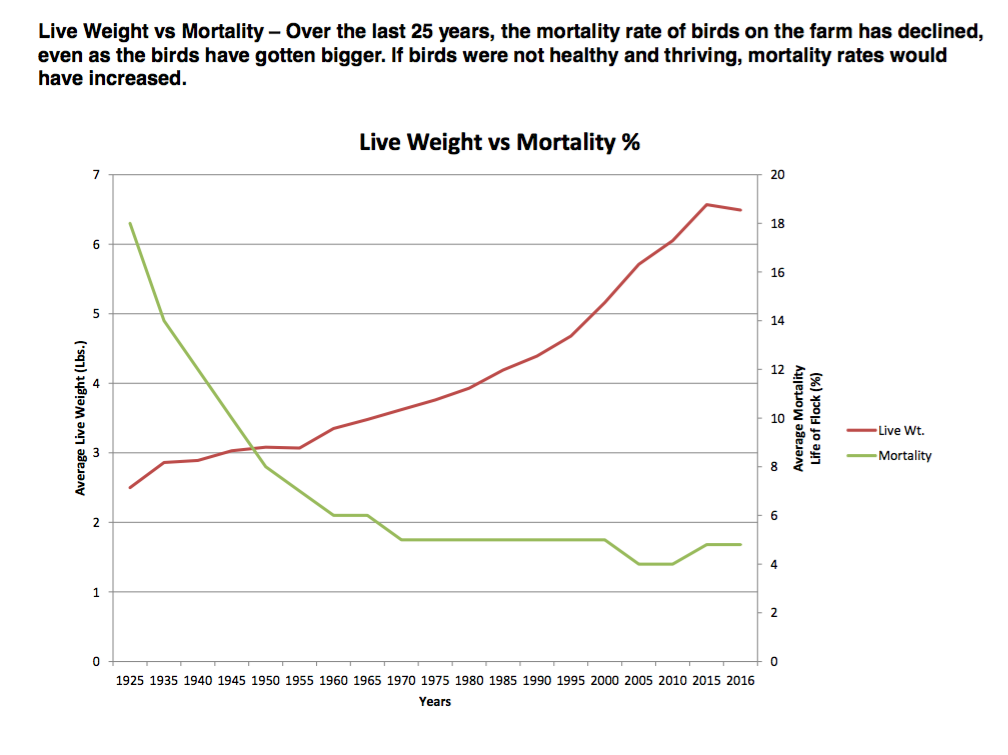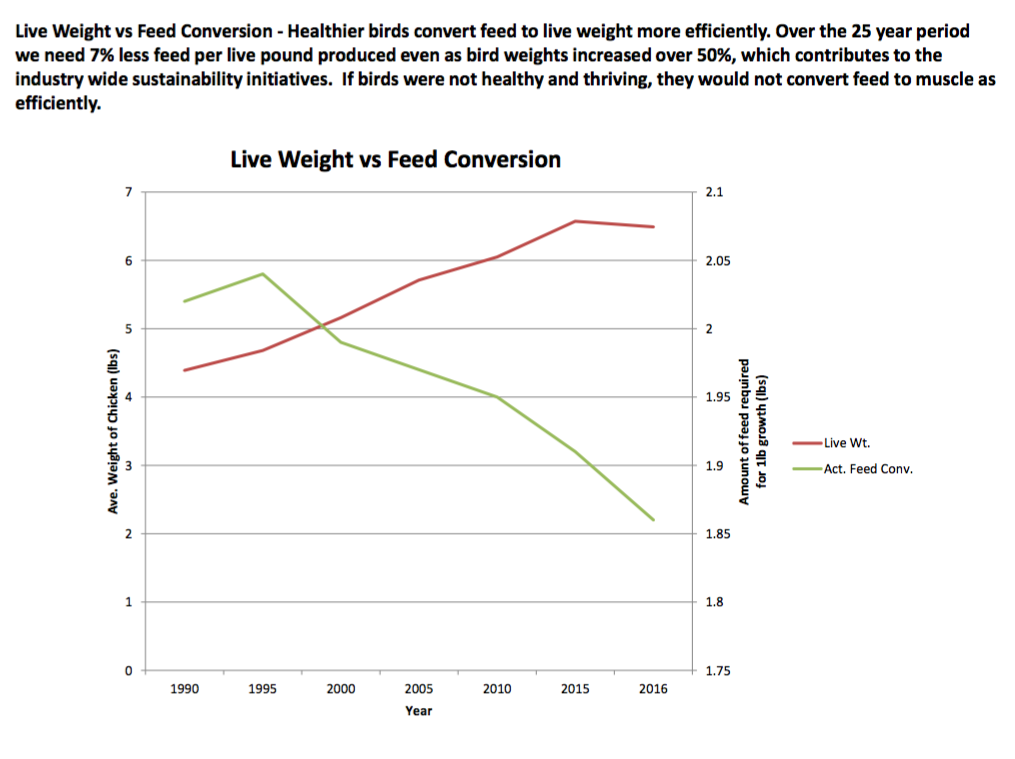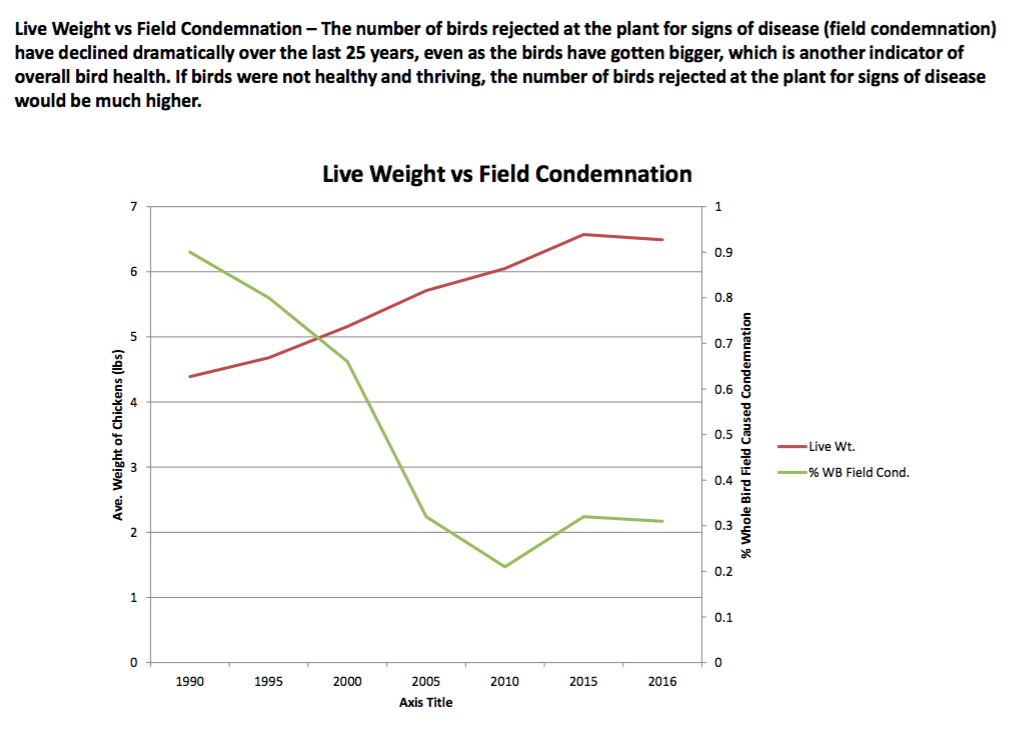Debunking the Myth that Chickens are “Suffering”
Chicken companies, farmers and veterinarians take pride in the way they care for their broiler chickens (chickens raised for meat)—so much so that chickens today are as healthy as they’ve ever been. However, in this post, we’ll be diving deeper into recent claims made by animal rights advocacy groups that “chickens are suffering.” Such claims simply have no basis in our reality today.
For starters, breeding chickens that “suffer” doesn’t make sense from a welfare OR business standpoint. If a chicken is suffering, that means it isn’t eating or growing, and it may not make it to market. The goal is to raise chickens that are healthy, able to roam, eat and drink, grow to market weight and feed families across America. So not only is it the right thing to do, a farmer’s paycheck depends on it.
Now let’s take a look at the myth that chickens are “suffering” because they grow too fast and too big.
Here are the facts:
Today’s chickens do grow bigger and faster than the chickens from years past. It is also a fact that today’s chickens are healthier, more affordable, and feeding more people, while having less impact on the environment.
And we know they are not suffering.
All current measurable data – livability, disease, condemnation, digestive and leg health – reflect that the national broiler flock is healthier than in years past.
For example, all of these improvements have led to a drop in chicken-on-farm mortality rates by 71%, compared to several decades ago.
There is a tremendous amount of science and animal husbandry that goes into breeding and raising today’s chickens. Through traditional breeding, breeders ensure bird size and growth rate never comes at the expense of the birds’ health or welfare. While chickens today are bred to grow faster, they’re also bred to grow stronger and healthier than ever before.
Farmers and scientists have strengthened the genetic lines of their flocks by identifying which chickens are the healthiest and strongest, and then breeding them together.
Today’s chicken breeders use DNA mapping and animal health diagnostic tools to detect underlying traits like heart health, susceptibility to disease, bone density and joint health to identify the best birds to breed, improving both the health and size of the next generation of chickens.
For example, potential leg problems, due to the growing weight of a modern broiler chicken, are much less prevalent than they were 20 years ago because farmers and breeders began breeding chickens for leg strength and overall skeletal health.
Today’s broiler chickens are also raised by farmers who are committed to welfare and care.
From the moment chicks arrive at the farm, they are provided with optimal nutrition, veterinary care and optimal living conditions. With nutritious feed, access to food and water 24/7, daily farmer check-ins, veterinary care and modern housing, the living conditions for broilers chickens have been set up to ensure that chickens can thrive.
Even though chickens are the healthiest they have ever been, the chicken industry is always seeking ways to improve the lives of the birds, because without healthy birds, there would be no chicken industry. Whether it’s looking at space and housing, studying different nutrition programs, breeding for the healthiest birds or working to eradicate diseases, the chicken industry is committed to continual improvement to do what is best for the bird, and ultimately, for you and your family.
***
If you’re looking to learn more about broiler chickens and how they’re raised, check out the Day in Life video series, which follows chicks from their first day on the farm until the day they are transported to processing.
If you have any questions, you can browse our FAQ page or comment below.


